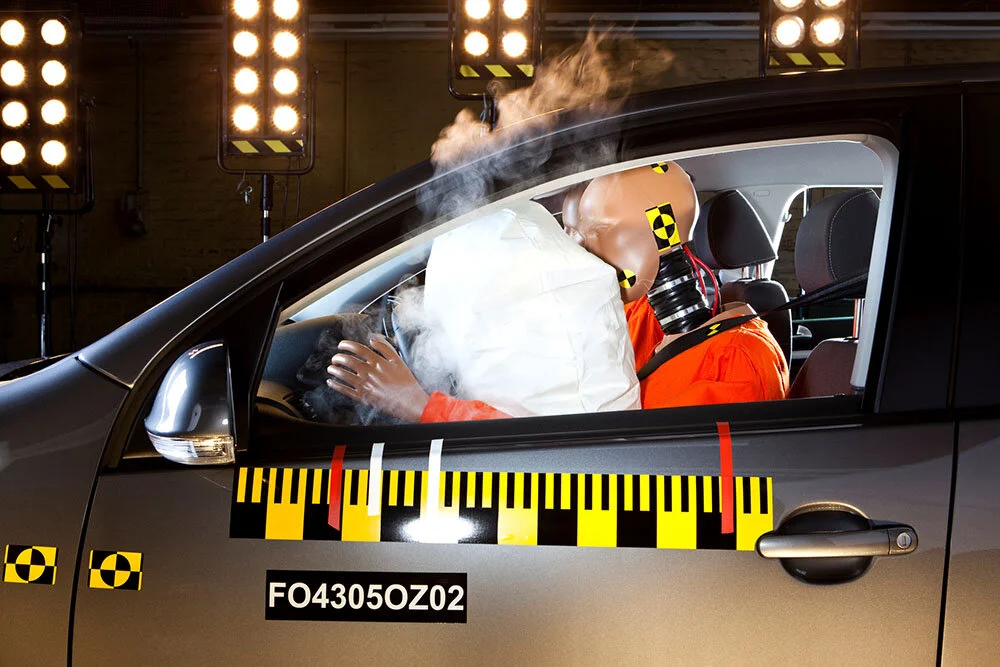
Ethical Car Design: Gender Equality
Our aim at IrishEVs is to highlight the role electric cars can play in reducing the everyday emissions that are worsening the Climate Crisis and impacting human health. As such, we are striving for a more sustainable, ethical and equal world.
This is also a key focus of our Ethical Car Design series, which looks at why EV manufacturers must commit to designing more ethical cars – covering every facet of vehicle design: from what they are made of, to how recyclable they are.
Today, on International Women’s Day, we look at the issue of gender inequality in car design, and why we must strive for better safety standards that protect all genders – not just the average male.
Male-centric safety
While crash-test dummies have been in use since the 1950s to research the impact of collisions on passengers, there is a very clear gender bias in the car safety industry that puts women at risk on a daily basis.
In fact, the EU does not currently require that any anthropometrically accurate female crash-test dummy be used in any of its tests, with essential collision research still prioritising dummies which represent the average male (1.77m tall, 76kg weight).
Only a single test uses a female dummy and that dummy is only used as a passenger in tests – so we have no empirical data on how female drivers are impacted during a collision.
Worse still, the “female” dummy used in this test is just a scaled-down version of the male dummy, and therefore overlooks key difference in muscle mass, bone density and differences in vertebrae spacing, all of which are crucial factors to consider when protecting people during a crash.
We can say beyond a shadow of a doubt, then, that car design shows a clear gender bias.
Deadly consequences of gender bias
Female occupants are 47% more likely to be seriously injured in a collision compared to their male counterparts
Perhaps it should come as no shock then that the University of Virginia found that women wearing seat belts during a collision were 47% more likely to be seriously injured compared to their male counterparts, while 71% were more likely to be moderately injured.
Worse still, the US National Highway Traffic Safety Administration found that female drivers and female front passengers were 17% more likely to be killed while wearing a seat belt than their male counterparts.
The situation is worse still for pregnant women.
While a pregnant crash-test dummy was first designed back in 1996, it has yet to be mandated for use in either the US or the EU, and has left pregnant women and their unborn children more vulnerable to life-altering or life-threatening consequences from a collision.
For example, 62% of third-trimester pregnant women were not able to use standard seatbelts when driving, putting both the mother and her child at risk.
As a result, car crashes are currently the primary cause of foetal deaths related to maternal trauma.
“It is clear that they have not kept pace with the simplest of tasks: ensuring the likelihood of surviving a collision, regardless of gender.”
More ethical car design
Alongside reconsidering issues around sustainability, recycling and sourcing of materials, it is critical that car designers take stock and start to design vehicles with all genders in mind.
Once again electric cars offer an opportunity for reflection about the society that we want to build, and consumers of EVs are typically adopting them as part of a more ethical lifestyle and demand that manufacturers keep pace.
It is clear that they have not kept pace with the simplest of tasks: ensuring the likelihood of surviving a collision, regardless of gender.
IrishEVs lends its support to the calls to implement mandatory crash testing based on anthropometrically-accurate models for both male and female vehicle occupants to end this inequitable and harmful practice of male-centric design, which has meaningful and deadly real-world consequences.
Finally, in addition to the sources cited in this article, we would recommend reading Invisible Women: Exposing Data Bias in a World Design for Men by Caroline Criado Perez, which as a major source and inspiration for this article. The book covers other troubling examples of clear gender bias that wildly impacts daily life – from how protective work clothing isn’t designed for women’s bodies, to how office temperatures are typically 5⁰C too cold for women, and the consequences of these designs.
What To Read Next
How Car Makers Are Skirting Emissions Regulations
Discover how car manufacturers are pooling their emissions in order to avoid fines and the implications of this for electric cars and the Climate Crisis
Ethical Car Design: Leather
Why drive an EV to lower your carbon footprint, when it is lined with dead animals which are responsible for vast amounts of greenhouse gases?




